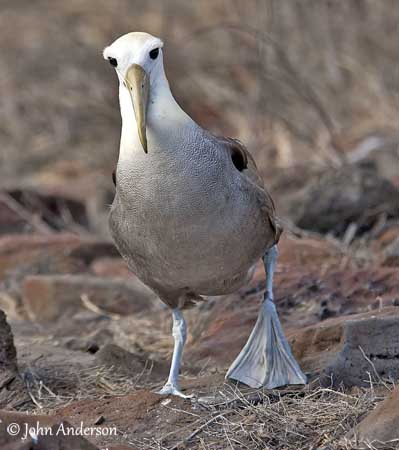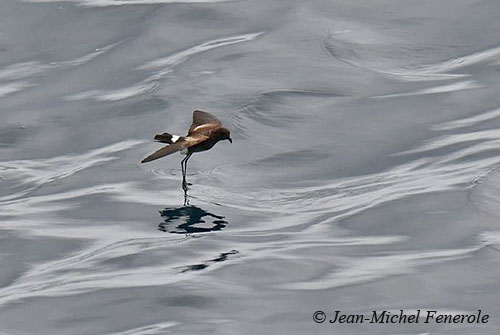
Text by Nicole Bouglouan
Photographers:
John Anderson
John Anderson Photo Galleries
Jean Michel Fenerole
Photos d’Oiseaux du monde
Patrick Ingremeau
TAMANDUA
Otto Plantema
Trips around the world
Alan & Ann Tate
AA Bird Photography
Sources of the text:
Chile Makes the Desventuradas Islands a Marine Reserve
Islas Desventuradas: The Unfortunate Islands, One of the Luckiest Places on Earth
San Félix-San Ambrosio Islands Temperate Forests
Juan Fernández & Desventuradas Islands Bioregion
Le Chili crée le plus grand parc marin d'Amérique latine
Chili : création d’une vaste réserve marine
Wikipedia, the free encyclopaedia
Bird Species List: Avibase (Lepage Denis)
American Kestrel – Falco sparverius – Crécerelle d’Amérique
Antarctic Prion - Pachyptila desolata - Prion de la Désolation
Black-bellied Storm-Petrel - Fregetta tropica - Océanite à ventre noir
Black-browed Albatross - Thalassarche melanophris - Albatros à sourcils noirs
Black Noddy - Anous minutus - Noddi noir
Black Skimmer – Rynchops niger - Bec en ciseaux noir
Blue-footed Booby - Sula nebouxii - Fou à pieds bleus
Bronze-winged Duck or Spectacled Duck - Speculanas specularis - Canard à lunettes
Brown Noddy - Anous stolidus - Noddi brun
Buller’s Albatross - Thalassarche bulleri - Albatros de Buller
Buller's Shearwater - Ardenna bulleri - Puffin de Buller
Cape Petrel - Daption capense - Damier du Cap
Chatham Island Albatross - Thalassarche eremita - Albatros des Chatham
Cook's Petrel - Pterodroma cookii - Pétrel de Cook
Elliot's Storm-Petrel - Oceanites gracilis - Océanite d'Elliot
Great Frigatebird - Fregata minor - Frégate du Pacifique
Grey Noddy - Anous albivitta - Noddi gris
Guanay Cormorant - Leucocarbo bougainvillii - Cormoran de Bougainville
Juan Fernandez Petrel - Pterodroma externa - Pétrel de Juan Fernandez
Kelp Gull - Larus dominicanus – Goéland dominicain
Kermadec Petrel - Pterodroma neglecta - Pétrel des Kermadec
Long-tailed Jaeger - Stercorarius longicaudus - Labbe à longue queue
Markham’s Storm-Petrel - Hydrobates markhami - Océanite de Markham
Masatierra Petrel - Pterodroma defilippiana - Pétrel de De Filippi
Masked Booby - Sula dactylatra - Fou masqué
Parasitic Jaeger or Arctic Skua - Stercorarius parasiticus - Labbe parasite
Peregrine Falcon - Falco peregrinus - Faucon pèlerin
Pink-footed Shearwater - Ardenna creatopus - Puffin à pieds roses
Pomarine Skua or Jaeger - Stercorarius pomarinus - Labbe pomarin
Red-necked Phalarope - Phalaropus lobatus - Phalarope à bec étroit
Red-tailed Tropicbird - Phaethon rubricauda - Phaéton à brins rouges
Ringed (Hornby) Storm-Petrel - Hydrobates hornbyi - Océanite de Hornby
Salvin's Albatross - Thalassarche salvini - Albatros de Salvin
Slender-billed Prion or Thin-billed Prion - Pachyptila belcheri - Prion de Belcher
Sooty Shearwater - Ardenna grisea - Puffin fuligineux
Sooty Tern - Onychoprion fuscatus - Sterne fuligineuse
Southern Fulmar - Fulmarus glacialoides - Fulmar argenté
Southern Giant Petrel - Macronectes giganteus - Pétrel géant
Southern Lapwing - Vanellus chilensis - Vanneau téro
South Polar Skua - Stercorarius maccormicki - Labbe de Mc Cormick
Stejneger's Petrel - Pterodroma longirostris - Pétrel de Stejneger
Swallow-tailed Gull - Creagrus furcatus - Mouette à queue fourchue
Waved Albatross - Phoebastria irrorata - Albatros des Galápagos
Wedge-rumped Storm Petrel - Hydrobates tethys - Océanite téthys
White-bellied Storm-Petrel - Fregetta grallaria - Océanite à ventre blanc
White-tailed Tropicbird – Phaethon lepturus – Phaéton à bec jaune
Wilson’s Storm-Petrel - Oceanites oceanicus - Océanite de Wilson
DESVENTURADAS ISLANDS BIRD SPECIES
The Desventuradas Islands or Unfortunate Islands are formed by four small oceanic islands, located 850 km off the Chilean coasts, NW of Santiago in the Pacific Ocean, and about 750 km north of the Juan Fernández Islands.
The four volcanic islands include San Félix and San Ambrosio, the largest islands with respectively 2 and 3,1km² in size. They are part of the Pascua volcanic chain. Two smaller islets, the Islote Gonzáles (0,25 km²) and the Roca Catedral (0,01 km²) are also part of the archipelago.
he surface of these islands in only 5,40 km² and due to the very small land area, the biota of this archipelago is stunted and the topography is very rugged. There are two peaks, one of 193 metres denuded by strong winds on San Félix, and one of 479 metres on San Ambrosio whose cliffs rise from the sea on almost all sides. The small Islote González is 166 m high and the Roca Catedral made up of several tiny rocks and stacks, reaches only 53 metres of elevation.

With rainfalls occurring mainly in winter, there are no permanent sources of fresh water on the islands and the vertebrates found on both islands are exclusively limited to birds. Marine birds are the most numerous and include Procellariidae, Laridae, Diomedeidae, Sulidae, Fregatidae, Phalacrocoracidae, Stercorariidae, Scolopacidae, Phaethontidae, Charadriidae, Oceanitidae, Hydrobatidae, and two Falconidae species.

Some of them are endangered bird species, and build their nests on, or visit the islands.
Among them, the Masatierra Petrel or De Filippi's Petrel is a nesting species on Desventuradas Islands and Juan Fernández Islands, like the White-bellied Storm-Petrel (subspecies F.g. segethi), the Grey Noddy (subspecies A.a. imitatrix), and the Kermadec Petrel (subspecies P. n. juana) which occurs in N Pacific Ocean, and breeds farther S on Juan Fernández Islands and on Desventuradas Islands (San Ambrioso and San Félix), off NC Chile.

Both Desventuradas Islands and Juan Fernández Islands form a unique bioregion. We can find here temperate broadleaf forests and grasslands containing many endemic plant species such as Thamnoseris lacerate, an endemic shrub found only within this ecoregion, especially on San Félix, in a largely unvegetated landscape. It grows at bases of cliffs and forms clusters and edges in the areas where the introduced goats have no access.
On San Félix, the vegetation is low, with about 20-30 cm high bushes due to the arid conditions, whereas on San Ambrosio, individual examples of Thamnoseris lacerate may grow up to 5 metres high, with the help of fog.
The vegetation consists generally of a small mosaic of matorral, barren rock, and trees of various sizes, shrubs, ferns and herbs.

These islands are not inhabited, except a detachment of the Chilean Navy and a recent addition of an airport on San Félix. Human infrastructures involve the reduction of the small habitat already limited by the size of the island.
Recent agricultural expansion alters the native habitat. The increasing human presence with introduced species of both plants and animals compete with the natives. Domestic cats and dogs threaten the few bird species present on these islands.
There are no human settlements on San Ambrosio Island, and no report of new introduced species beyond the current presence of goats and rodents.

The seabirds nesting and visiting the Desventuradas Islands and the complete ecoregion need to be protected, because they play an important role in the ecosystem by transferring marine nutrients to the terrestrial system supporting plants and invertebrates living only here, including fish and mammals such as the Juan Fernández fur seal, a species that cannot be found anywhere else. All these species, both plants and animals, could be threatened by invasive animal species introduced by humans.
The creation of the Nazca-Desventuradas Park is an important step for the global biodiversity conservation. It is the biggest marine park in South America.
